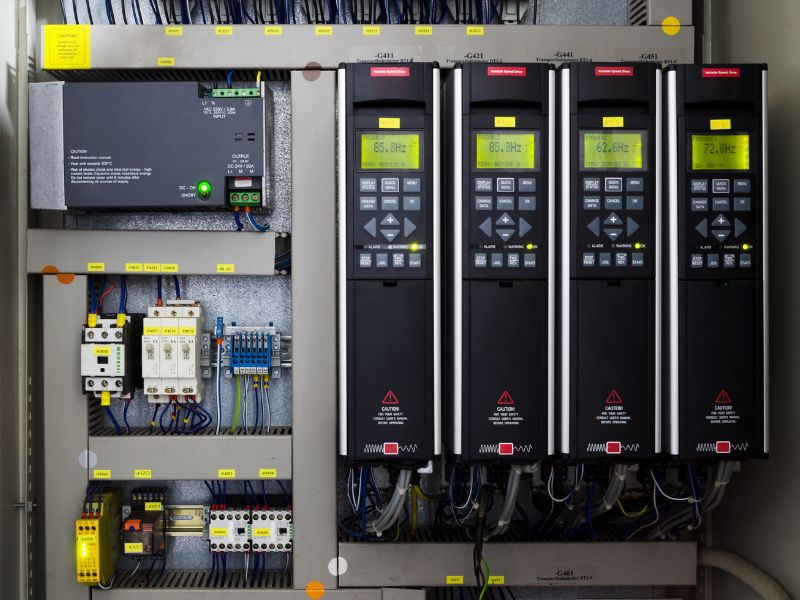What is the difference between absolute encoders and absolute encoders?
Absolute encoder
Absolute encoder is a feedback device. It provides position, angle, and speed information by outputting either digital word or bit in relation to motion. The characteristic feature for this type of encoder is being able to output words or bits for each position.
What are the advantages of an absolute encoder?
Due to outputting digital words or bits instead of a stream of pulses, absolute encoder has several advantages to offer to the user, mainly:
- high overall resolution,
- low homing time resulting in better start up performance,
- accurate motion detection along multiple axes,
- better electronics integration due to multiple output protocols,
- good recovery from system and power failures.
Absolute encoders also affect overall application performance due to their high positioning accuracy.
What are the disadvantages of an absolute encoder?
Main disadvantages of the absolute encoders are a result of their sophisticated built – they can be costly and complicated to manufacture, which inevitably causes them to be more expensive than incremental encoders.
Applications of an absolute encoder
Absolute encoders are used to:
- determine multi-axis orientation for CNC machines utilized in parts manufacturing,
- accurately position multiple stabilizers for large vehicles, such as cranes or aerial lifts,
- move automatic doors and bays without the need for a limiting switch,
- automatically determine the height of scissor beds that are commonly used in hospital wards,
- cleanly continue robotic movements even in case of power grid failure.
Incremental encoder
Incremental encoder is a device that generates a pulse as the shaft rotates through a specified angle, hence the other name: a rotary-pulse converter. The number of pulses generated by the encoder per revolution is defined by the resolution of the device.
What are the advantages of an incremental encoder?
Incremental encoder provides high quality, reliable speed and distance feedback. Unlike absolute encoders, incremental encoders do not provide information about the absolute position, which means fewer sensors are involved. It results in much simpler and therefore cheaper electric components used to built the device, which affects its final price.

What are the disadvantages of an incremental encoder?
The biggest disadvantage of incremental encoders is their susceptibility to environmental factors. Due to output frequency limitations they can lose resolution at high speeds. Other disadvantage of the incremental encoder is connected to it’s limited functions – due to the device’s capability to only provide chance information, it requires a reference device in order to calculate motion.
Applications of an incremental encoder
Incremental encoders are one of the most common rotary encoders. They can be used in positioning and motor speed feedback applications. It includes:
- heavy duty, mainly pulp, paper, steel, and wood mills, which are a demanding environment with a high probability of contaminants, moisture, high temperature, shock, and vibration;
- industrial duty, for example food and beverage, textile, and other factory automation plants, that create an environment which requires moderate temperature, shock and vibration specs, as well as standard IP ratings;
- light duty/servo, mainly robotics, electronics, and semiconductors, that form a controlled environment with high requirements regarding temperature and accuracy.
Similarities and differences between absolute encoders and incremental encoders
Both absolute encoders and incremental encoders are programmable encoders – devices used to convert the offset and angular position into an electrical signal, that allow the users to program some of the crucial parameters by themselves, for example resolution, output signal, and rotation directions. The main differences between absolute encoders and incremental encoders are due to the types of signals generated at the output, and the possibility of memorizing the measured quantity. An absolute encoder can inform the user about the exact position of the shaft in its rotation at any given time, while an incremental encoder can only notify about the change in position.





